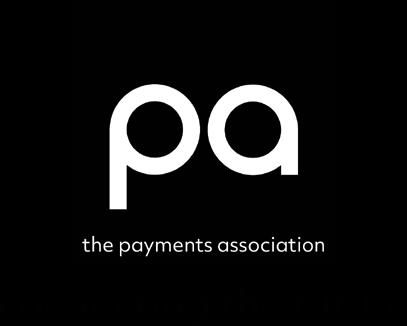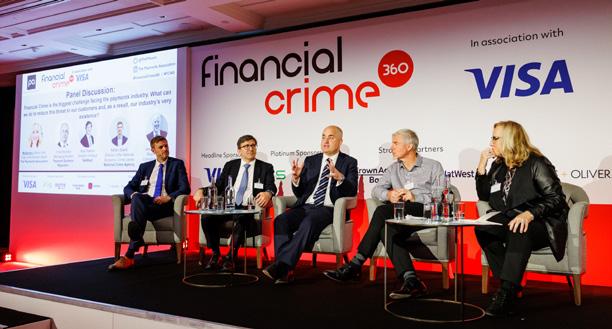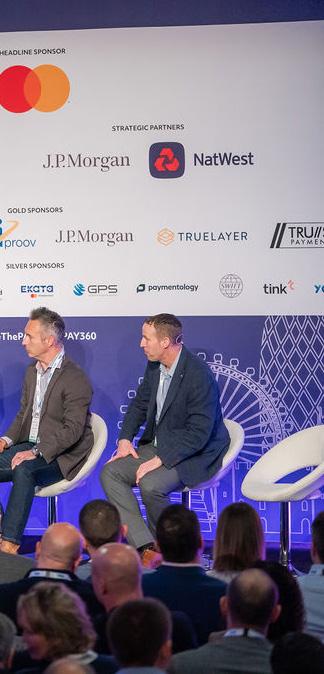
















Europe is a region currently witnessing phenomenal change throughout the vast and complex payments industry, driven by a combination of technological advancements and immense consumer demand
 Writer: Ed Budds | Project Manager: Deane Anderton
Writer: Ed Budds | Project Manager: Deane Anderton
Trading in Europe within the expansive payments industry is not cheap. In order to stay afloat, many financial institutions must now rely on the backbone of large and complex organisations.

For both domestic and international businesses, Europe remains much more complex than other continents, mixing languages, payment methods and even regulations.
The European region has also seen an explosion of FinTech businesses in recent years, offering many similar products to traditional banks.
As the world still struggles to return to pre-COVID-19 levels, several such industries have turned adversity into a fresh advantage. With digitalisation processes already well underway, the payments sector has received a key boost, with European citizens increasingly demanding better customer experiences through digital payments.
With the EU’s payments sector as varied as the cultures of each member state, the European point-of-sale (POS) market recently announced a post-pandemic increase of 14 percent yearly growth, with Norway, Belgium and Spain as the most dominant forces in this impressive rebound.
The European Banking Authority (EBA) claims the utilisation of digital platforms to bring customers and financial institutions closer together is rapidly expanding and this growth is projected to continue surging as financial institutions look to satisfy customer demands for both convenience and decreased costs.
The Payments Association exists today as the largest community in the field of payments. Now curating communities in the UK, Europe, and Asia, helping almost 300 companies enhance their commercial interests, The Payments Association endeavours to solve societal problems such as financial exclusion and evaluate new opportunities for innovation in payments.
CONNECT - Save time and money by connecting with the industry’s key stakeholders each month at inperson and virtual meetups, as well as identifying new opportunities and initiating new partnerships.

SHAPE - Join a working group project alongside a group of subject-matter experts in order to drive meaningful change and gain a position as a thought leader on a certain topic.
LEARN - Gain actionable, bite-sized insights on today’s business-critical industry issues in the membersonly resource hub.
MARKET – Gain brand exposure by profiling your company on The Payments Association’s website by positioning it as a part of the most influential community in payments.
The Payments Association’s purpose is to empower the most influential community in payments, where connections, collaboration and learning shape an industry that works for all. We dig deeper with Director General, Tony Craddock


EME Outlook (EO): Could you talk us through The Payments Association – when was it founded and what was its initial vision?
Tony Craddock, Director General (TC): The association was founded in 2008 by myself and a small board of
directors who identified that the payments industry was undertaking a period of rapid evolution and change. Back then, there wasn’t a network that could act as the catalyst for that growth, so we saw an opportunity to set up such a community that could support and serve the interests of companies across the entire breadth and depth of the payments industry.
We’ve since deployed a commercial community model that has a range of services to cater for the various needs of the community and as a result, we have built a very loyal and growing membership base.
We have also achieved a high level of engagement from our members and were recently recognised as the UK Association of the Year by the Association Excellence Awards 2022, which we’re really proud of.
EO: Do you think you’ve succeeded in delivering that initial vision?
TC: I think we’re just starting out really. We started off in a tiny room with a small group of people. We didn’t have a big pot of money to invest in this, and it’s been built organically using our own investment, hard work and creativity.
I believe there’s now a need to play an even greater role on several fronts to serve the interests of the
payments industry. It’s an unusual sector because, unlike many markets, where you find yourself competing with other companies, for those in the payments industry, collaboration is a prerequisite for success. Today’s partner or competitor may be tomorrow’s supplier or customer. So everybody must get on with everyone else. We enable this collaboration by providing a range of different events, research projects, and industry engagement working groups, which make collaboration easy and efficient.
In payments, collaboration is not a project. It’s a lifestyle. With the economic downturn and the hangover from the pandemic ringing in our ears, we have to further improve how we influence industry institutions such as the regulators, the Treasury and central banks, to make sure that the foundations of our industry are rock solid.

We must also look to deepen the breadth of services we provide, particularly around training and development, and broaden them, by growing across the EU and in different regions of the world.

TC: One of the issues that keep our members up at night is that fraudsters and scammers are getting smarter, so we as an industry must get better at preventing them from scamming and exploiting consumers.

Secondly, we’ve got to incorporate new technologies into our blueprint for the future. For example, the Bank of England is running a proof of concept for a Central Bank Digital Currency (CBDC) wallet, which is really progressive and exactly the sort of new technology that we must encourage the industry to embrace.
Thirdly, our community must try to encourage the adoption of new innovations without unsettling the underlying financial system, while promoting the UK as a market-leading provider of the different components that make our industry work. And we need access to an informed and progressive government that is prepared to provide support for our sector, so we are in the process of encouraging and inspiring the current government ministries to promote and embrace the adoption of new technologies and proportionate, agile regulation.
Elsewhere, there is going to be greater pressure to consolidate because of the changing nature of funding in the industry. After a decade of major investments into FinTech and payments, there’s less money around right now, and the money that there is will be more carefully focused on short-term profit rather than longer-term growth. This means that some people’s cash runways will be shorter than they had expected, and they will therefore be looking to consolidate with others. Personally, I welcome this, as it means those companies that focused on revenue rather than profit, with all the risks attached to this approach, will be absorbed into others built on more robust foundations.
“Chargebacks911 has worked to mitigate chargeback risk and eliminate fraud for more than a decade. In fact, we were the very first global company dedicated to tackling the problem of chargebacks, which represents more than $200 billion in annual liability to the market. With a laser focus on this goal, we have developed the most effective strategies for minimising the impact of chargebacks, helping businesses streamline processes and optimise data insights to reduce loss.”
The opening words of Monica Eaton, founder of Chargebacks911, encapsulate not only the size of the chargebacks issue for companies but the dedication and focus that has led Chargebacks911 to become the first global company fully dedicated to helping merchants combat post-transactional fraud.
The origin of Chargebacks911 was not rooted in banking or payments. In fact, Monica wasn’t in the financial sector at all. She was a merchant that had poured years into building up an online business only to see its success and revenue eaten away by customer disputes.
She needed a fast and reliable solution, one that prevented chargebacks, recovered lost revenue, and equipped her business for sustainable growth. After trying just about every available provider, she reached a frustrating conclusion: there simply wasn’t an effective, merchant-centric solution available — so she created one.

Over a decade later, Chargebacks911’s exclusive datadriven platform provides true end-to-end chargeback
prevention and remediation technology that safeguards more than 2.4 billion online transactions every year, representing clients in 87 different countries.

With more people buying online than ever before, there will be a greater number of mistakes, especially from new and inexperienced online users. Additionally, with more money being spent through ecommerce, there is more incentive for fraud. Both of these factors are going to increase the number of chargebacks initiated by consumers, and that’s bad news for any business selling online.
Chargebacks aren’t just another way to get a refund –they cost merchants significantly more when factoring in admin fees and the potential for card schemes to raise fees or assess penalties. It becomes a particular problem when you look at how many chargebacks aren’t legitimate but are in fact examples of “friendly fraud”.
At one end, friendly fraud can be the result of simple mistakes – not recognising a transaction on a bank statement or not checking if a package is running late. We are increasingly finding that chargeback claims are more likely to be fraudulent than not, perhaps as high as 86 percent.
Most merchants don’t know how to distinguish friendly fraud from genuine chargebacks, or how to effectively respond. To combat the issue, retailers must implement a multi-layered fraud solution composed of both pre- and post-transaction elements to identify the root cause of chargebacks. Enter Chargebacks911.

Having built success, trust, and results with its merchant customers via its Chargebacks911 brand, the leadership team launched its revolutionary new brand, Fi911, to provide financial institutions with a suite of next-generation chargeback and merchant lifecycle management technology.
Developed by Chargebacks911’s experts in collaboration with some of the world’s largest institutions and payments processors, Fi911 empowers financial institutions with APIs and innovative quick launch components to help deliver speed-to-market capabilities for managing chargebacks and related activities. Its tools are built for the challenges that financial institutions face today in the midst of the global growth in card payments and double-digit, yearover-year growth in chargeback volumes – such as its proprietary DisputeLab™. This solution helps make resolving chargeback disputes faster and more efficient by optimising each step in the dispute cycle. In addition, as part of its AI-driven platform, Fi911 offers merchant onboarding, post-transaction monitoring, lifecycle management and reconciliation services.
The company is proud of the unique and comprehensive suite of solutions it has developed to help safeguard transactions for industry stakeholders. Its products are developed to serve financial
institutions and merchants, with varied implementation options to fit virtually any budget and size. Its clients are either merchants, served by the Chargebacks911 brand and product suite, or banks, supplied by the Fi911 brand catered to acquirers and related financial service institutions.
It also works with many third-party vendors and suppliers, such as CRMs, gateways, fraud filters, processors, etc. The platform aggregates connections and data, driving efficiencies and reducing requirements for manual reviews.
Monica and her company have the capacity to bring on any business, large or small, that receives chargebacks and disputes. The company’s goal is to minimise the loss from post-transaction fraud and utilise data analytics to help prevent it from happening in the future – offering a one-stop shop for everything dispute related.

Disputing high volumes of chargeback claims would be extremely difficult with the limited information that card schemes give merchants about chargebacks, which is usually not much more than a generic reason code. Merchants need a way to get the information that they need to challenge disputes and win, and Chargebacks911’s solutions solve this problem.
Its unique solutions system was built from the ground up by industry experts, taking into account the breadth of experience gathered at Chargebacks911
and its wide-reaching network. When paired witrealtime management solutions for the acquirer and their merchants so they can reduce chargebacks and prevent related issues going forward.
Through DisputeLab, acquirers and their partners can face the growing levels of first-party fraud and chargebacks knowing they have the tools that will protect them against any fast-paced or dynamic events that give rise to chargebacks and potentially devastate bottom lines. Overall, the system mends an archaic chargeback management process that was not meant for today’s digital world. It allows acquirers to scale their business and operate more efficiently. It can also protect their merchants if paired with Chargebacks911’s merchant portal.
DisputeLab’s effectiveness when protecting financial institutions and merchants against damages associated with chargebacks hasn’t been seen anywhere else in the acquiring chargeback management space. As such, a number of global acquirers have chosen this solution for its key features and benefit from:

1. Reducing human error: Automating the chargeback management process and equipping acquirers with an intuitive user interface significantly reduces staff training time for ‘chargeback competence.’ DisputeLab also enables acquirers to deploy full-time equivalent (FTE) on value-adding tasks rather than relying on manual processing.
2. Operating with an in-built rules engine: This ensures that an acquirer’s now-automated chargeback management system is kept entirely up to date with the latest card scheme rules. These can be configured to business’ bespoke rules at any time. Keeping in line with scheme rules is complex and time-consuming when done manually. Through DisputeLab, acquirers are protected against costly penalties from not meeting rules or deadlines.
3. Handling dynamic or fast-moving business events: It can reorganise or ring-fence chargebacks in real time, so acquirers can immediately locate, isolate, and treat associated transactions differently to suit the business’s requirements when managing a crisis event.
4. Flexibility: The cloud-based system can be easily integrated with almost any end point, file type or system without the need for anyone to visit a business’s premises, making onboarding swift and simple.
5. Competitive advantage: Merchants are more likely to opt for an acquirer who can protect them from the huge profit loss to chargebacks, making DisputeLab a competitive differentiator for acquirers.
Chargebacks911’s operations have grown significantly over the last year. It now services more than 45,000 merchants across 87 countries and 27 verticals, working closely with some of the largest merchants and financial institutions in the world. Through its chargeback remediation platform, which has the broadest coverage and supports virtually all payment methods that have chargebacks, it has protected over 10 billion transactions and recovered more than £1 billion in falsely disputed and stolen revenue to date. Fi911 is the technology platform provider for 40 financial institutions, supporting many of the world’s largest Tier 1 acquirers. It has provided a reduction in churn and attrition by over five percent for acquirers, and merchants have reported an increase in processing sustainability and growth by over 12 percent.
Through consistent rules adherence, chargeback monitoring, merchant communication, and responsible deadlines, Chargebacks911’s technology promotes significant industry-wide savings and helps acquirers, and their merchants, tackle the ever-growing issue of chargebacks head-on. Chargebacks are a problem that isn’t going away anytime soon. Shopping habits have been forever changed. So, going forward, Chargebacks911 and its sister brand Fi911 will be investing further to help all entities fight unnecessary chargebacks, enabling them to efficiently and effectively mitigate friendly fraud and lost profit.
Chargebacks911® drives profitability for online merchants by decreasing payment disputes and recovering revenue lost to chargeback fraud. Through a proprietary suite of software and service offerings, the company delivers transparent, end-to-end chargeback management solutions backed by the industry’s only performance-based ROI guarantee.
Phone: 877.634.9808
Email: info@chargebacks911.com
Website: chargebacks911.com
Address: 18167 US Highway 19 N. Clearwater, FL 33764
systems. There is for example room to make some cross-border payments more seamless as the world of lower value transactions grows. Swift is working hard to address all the elements that are within our control and to upgrade the industry’s infrastructure to enable instant cross-border transactions 24/7 between over four billion accounts on our network worldwide, regardless of size or value.
In today’s rapidly moving world, people everywhere expect to be able to send and receive payments instantly with a touch of a button or a tap on a screen. All payments therefore need to be fast, transparent, efficient and frictionless regardless of size or value, both domestically and across borders.
We can see firsthand the increasing benefit of values smoothly flowing across borders in our fast-paced, globally enabled society. Cross-border payments are essential to the world’s economic growth and international trade – not only for the world’s largest banks, but also for small businesses and individuals across continents.
While the majority of today’s cross-border payments are made quickly– settling within minutes or even seconds on routes where well-established direct links exist between countries – they are by nature more complicated than domestic payments. Our data shows that delays often occur at the receiving end of an international payment, likely because of capital controls and associated compliance checks, local operating hours, fragmented or incorrect data, and the use of batch processing
Together with our global community of financial institutions, Swift has made huge strides to enable instant and frictionless cross-border transactions for wholesale payments. Today, thousands of financial institutions use Swift to send and receive payments quickly and securely across the world, with full transparency over where the payment is at any point in the transaction. We give institutions confidence to send payments abroad knowing where their money is every step of the way, that all proper controls have been passed and that it will arrive on time. Not only that, but we have also delivered easy-to-implement solutions to address other friction points in the payments chain – including fixing avoidable errors upfront to avoid delays down the line, streamlining operational investigations when necessary, and ensuring compliance processes can keep up with faster payments.
While wholesale payments have traditionally dominated the cross-border payments space, we have more recently witnessed consumer behavior trends shift from a largely domestic payments model to one that regularly includes sending money abroad. The need for a frictionless experience for low value payments is clearer than ever.
Swift is committed to helping financial
 Nasir Ahmed, Head of UK & Ireland, Swift
Nasir Ahmed, Head of UK & Ireland, Swift
institutions improve the experience for consumer and lower-value business payments to help these businesses thrive. The foundations we laid in the high value corporate payments space have given us the opportunity to deliver the same experience in the highly competitive retail and consumer space, allowing banks to re-use infrastructure investments they have already made.
For instance, our Swift Go service allows financial institutions to enable their customers to send predictable, fast, highly secure and competitively priced payments anywhere in the world with ease – directly from their bank accounts. With a fastgrowing community of more than 630+ banks in 130 countries, Swift Go is not just rivalling the offers of card players and Fintechs, but it is doing so on a global scale as it rapidly grows to become the new standard in lowvalue international payments.
The increasing demand for instant cross-border payments has also fueled a global curiosity around central bank digital currencies (CBDCs). The Bank for International Settlements recently reported that nine out of 10 central banks are currently exploring digital currencies, covering economies that account for more than 90 percent of global GDP. However, the risk of these CBDCs becoming fragmented is high, since central banks are using different technologies, standards and protocols.
While we don’t yet know the exact role that CBDCs will play, we do know that interoperability and linking between different CBDCs on a cross-border level will be critical to fully realising their potential and to ensuring protection against market fragmentation. We have launched a number of experiments which show that Swift can enable interoperability between different CBDC networks and between CBDCs
and existing payment systems. We are committed to working with our community and partners to support this major shift in the financial ecosystem and ensure that value in all its forms – whether digital tokenbased or traditional account based – can move around the world quickly, seamlessly and securely for as many people as possible.
This is a pivotal moment as the global payments industry stands ready for an instant, secure and frictionless future, with Swift at the forefront of this digital revolution. Our work today to innovate the industry’s global financial infrastructure will set it up for decades of success, creating a digital foundation for banks, corporations and small businesses to keep raising the bar on the services they provide to their customers.
Swift is further automating the end-to-end execution of payments on our platform, ensuring data issues are a thing of the past, and that service levels are sustained –making processing transactions faster, more efficient and cheaper without compromising on security. Underlying all of this is the rich data of ISO 20022, a standard for communicating financial information that is being adopted for cross-border payments across the Swift community from March of this year. Not only has Swift played a leading role in defining the standard, but it has been entrusted by the financial community to facilitate industry-wide adoption for crossborder payments.
We can see clearly that the future of payments is powered by better data, artificial intelligence, APIs and cloud-based solutions – and that future has already started.
www.swift.com/future

EO: Is it challenging to keep up with the rapidly changing technology landscape within the payments sector?

TC: Yes, and our role is to continue to champion those new developments and to encourage people to take on and adopt new approaches, new solutions, and new technologies. Equally, we must be mindful of the fact that although our industry is dramatically different to how it was even 10 or 20 years ago, in the grand scheme of things. The debit card was invented 30 years ago, and the credit card was only invented 60 years ago, so these are long term innovation cycles.
Looking at an example such as the addition of digital currencies into the technology landscape, while we’re all excited about what it might mean, we also recognise that the adoption of something like this will take several decades, so we must possess short-term enthusiasm, but keep our eyes on the long-term horizon.
EO: How do you see the association developing over the next five years?
TC: As a membership platform business grows in scale, the value for both the buyer and the seller also grows. In such a virtuous circle, the more members you have, the more value they get and the more productive our community becomes to run. This allows us to invest more in delivering value to our members, and the virtuous circle continues.
Secondly, we’ll become increasingly focused on our policy and government relations agenda because the government needs to be completely aware of and excited about the potential for this industry sector to generate new jobs, new businesses, and successful shareholders and to do that in a way that competes with other countries. Now that we’re outside the EU we need to remain focused on building the UK as a centre of leadership in payments.
And finally, we believe that bringing people together

“THE KEY TO THE FACILITATION OF PROFITABLE BUSINESS PARTNERSHIPS IS COLLABORATION, WHICH IS ENABLED THROUGH ENGAGEMENT”
– TONY CRADDOCK, DIRECTOR GENERAL, THE PAYMENTS ASSOCIATION
post-pandemic is increasingly important, so we’re going to invest in delivering larger events to make sure that our members and sponsors get access to greater opportunities, not just here but around Europe.
EO: What is the key to facilitating profitable business partnerships?
TC: The key to the facilitation of profitable business partnerships is collaboration, which is enabled through engagement.
For example, we facilitate an Advisory Board of 18 senior executives who have been elected by their peers to represent the industry. They help to set our content agenda, ensure our governance is world class and serve as our voice in the community. In return they create profitable partnerships with each other and our members.


We also get senior executives involved with our seven
ASSOCIATIONcommunity projects. These focus on the things that matter to our members, including financial crime, financial inclusion, regulation, cross-border payments, open banking and digital currencies. This year, we have launched a new initiative, Project ESG, which will help our industry to achieve a set of responsible, sustainable goals. It is proving to be extremely popular because our members really care about these things. And through these projects, relationships and partnerships are formed.
What makes this such a lovely business to work in is that we enable people to have a greater impact on the world around them in a way that makes them happier and more fulfilled. They feel more resilient in their working lives because they affiliate with like-minded others, have a place where they belong, and have influence over their collective destinies.
In the years ahead we will also be focusing on two other important components. Firstly, we want to professionalise
“WHAT MAKES THIS SUCH A LOVELY BUSINESS TO WORK IN IS THAT WE ENABLE PEOPLE TO HAVE A GREATER IMPACT ON THE WORLD AROUND THEM IN A WAY THAT MAKES THEM HAPPIER AND MORE FULFILLED”
– TONY CRADDOCK, DIRECTOR GENERAL, THE PAYMENTS
payments. We believe that too often people acquire skills and expertise in our industry simply by doing work and we would like to accelerate the pace at which they can learn by providing additional professional learning opportunities and more training.


Secondly, we’re going to be accelerating the democratisation of our community. We want our members to be increasingly able to influence what it is that the community does, and the way in which it is delivered through regularly checking in with our members and allowing them to influence the day-to-day content and direction of what we do. This means that the
community is not only positioned as being for them, but they’ve been involved in creating it, and co-creating it along with my team.
In the end, however, it’s really about the people we have on our team that makes all this possible. You don’t generally wake up in the morning and say, I want to work for a financial services trade association. Instead, people have joined us who are brilliant at developing great content for events, superb at managing business-tobusiness accounts, inspired at shaping policy or excellent at marketing and business development. And they have come together with the collective purpose of improving lives everywhere through payments. As a result, we have a wonderful team of highly motivated people who love working together and doing well by doing good. It’s inspiring and the real secret of our success.





